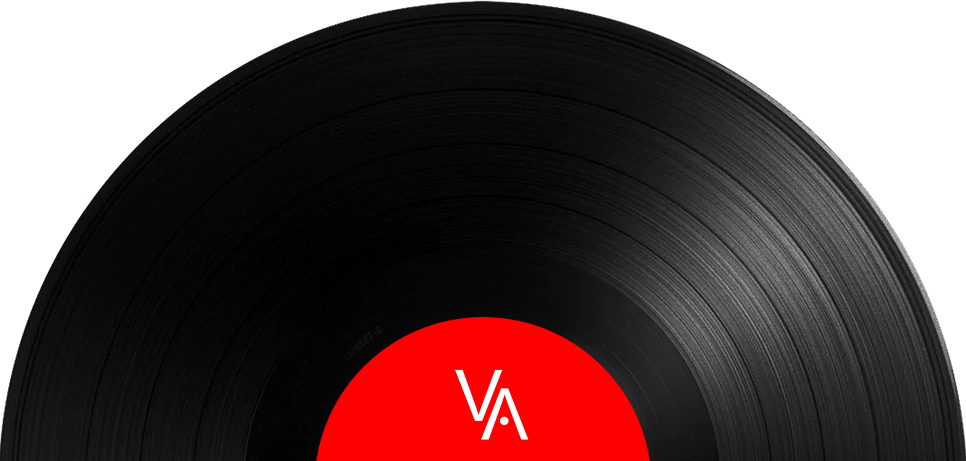
It's hard to believe it's been 50-plus years since this record was released. It was the second release for Crosby, Stills and Nash, but the first for Crosby, Stills, Nash and Young. Upon its release it topped the album charts and tossed off three Top 40 singles: Woodstock, Teach Your Children and Our House.
Recorded between July, 1969 and January, 1970, it was not an easy album to make. All the songs, except for Woodstock, were recorded as individual sessions by each band member alone, with the other band members adding their contributions later on. Young appears on only half of the album's tracks, and we only hear him sing on two songs - Helpless and Country Girl, both of which could have easily found a home on almost any of the solo records he would soon be releasing. But still, without his wonderful guitar back-and-forth with Stills - something the two learned to do in the their previous band, Buffalo Springfield - this LP would have been something else entirely and I don't think it would have been half as good. Bringing in Young - which was label boss Ahmet Ertegun's idea - was a good move, even if most of the time he didn't really want to be there. Graham Nash has stated that Young recorded his tracks alone and then brought them to the studio so the other band members could add their voices to it.
This record is, essentially - other than just a few tracks scattered throughout - four solo records jammed together in the same grooves. It was also recorded during a hard time for the band. David Crosby was mourning the recent sudden death of his girlfriend, Christine Hinton, and Nash and Stills had both just broken up with their girlfriends, Joni Mitchell and Judy Collins, respectively.
Stephen Stills, in a 1971 issue of Hit Parader, said that getting this album out of them "was like pulling teeth. There was song after song that didn't make it." And there were arguments about what songs would make the cut. Crosby told Rolling Stone that Stills didn't want to include his track, Almost Cut My Hair, because he thought the song's vocals weren't any good. I'm glad Crosby won that argument! It's a terrific song.
Stills brought a reworking of Joni Mitchell's Woodstock to the band after having already worked out an arrangement with Jimi Hendrix the previous September. You can hear that version on the 2018 Hendrix album Both Sides Of The Sky. The final version that appears here has Stills singing a slightly rearranged version of Mitchell's lyrics, injecting the line, "we are billion year old carbon" - which only appeared in Mitchell's final chorus - into all four choruses. Then that line was replaced with "we are caught in the devil's bargain" in the last chorus, which was also in Mitchell's final chorus. The song would be one of the few tracks where all four band members performed at the same studio session together.
Jerry Garcia contributed pedal steel guitar on Teach Your Children - it makes the song great instead of just very good - and former Lovin' Spoonful leader John Sebastian played harmonica on the title track.
Reviews were mixed. Langdon Warner, writing for Rolling Stone, said that despite the addition of Neil Young the sound was "still too sweet, too soothing, too perfect, and too good to be true."
Um - OK. Whatever.
Dick.
The album, coming when it did, was a bright spot in a politically and socially dark time n America. "Love is coming for us all," they sang, and the country lapped it up and pretended it was true. But Richard Nixon had been in office for more than a year and the anti-war movement was in full swing, highlighted by bombings and other violent acts committed by the Weather Underground and other groups. Add to this the rise of the Black Panther Party and the resulting government crackdowns, the breakup of The Beatles and the fact that both Jimi and Janis would soon be dead - well, a record like this coming out of nowhere all of a sudden seemed hopeful and - for what it's worth (pun intended) - reassuring. "Carry on. Love is coming for us all." It was exactly what America needed to hear at exactly the right time.
I have two copies … the Mobile Fidelity LP, released in 1983 (which sounds wonderful), and the 50th anniversary box set (2021). At first listen the box set also sounds really good. I don't know if one is better than the other, but I am very familiar with the Mobile Fidelity pressing and it would be very hard to beat. I imagine the box set vinyl was digitally mastered before release, even if the original tapes were used as the initial source. No doubt the tapes would be showing their age after a half century on the shelf, so it wouldn't be too much of a stretch to assume digital copies were made before anything else was done. I hate to overuse the word, but the MoFi album is very "warm," something a lot of all-analogue acoustic records seem to share. I don't know why it is, but acoustic instruments seem to benefit greatly from the all-analogue treatment. Digital sounds very clear, but it can but also be too sterile with acoustic instruments and when that happens it's never good. But the technology is changing and digital is improving … hell, even Mobile Fidelity uses digital technology these days! I got the box set mostly for the bonus tracks on the CD, but I'll probably do a shootout of the vinyl in the near future. I also have Deja Vu Alternates, which contains alternate versions of every track on the album. I'm pretty sure it's a digital release, though.
This record is, without hesitation …
It's hard to believe it's been 50-plus years since this record was released. It was the second release for Crosby, Stills and Nash, but the first for Crosby, Stills, Nash and Young. Upon its release it topped the album charts and tossed off three Top 40 singles: Woodstock, Teach Your Children and Our House.
Recorded between July, 1969 and January, 1970, it was not an easy album to make. All the songs, except for Woodstock, were recorded as individual sessions by each band member alone, with the other band members adding their contributions later on. Young appears on only half of the album's tracks, and we only hear him sing on two songs - Helpless and Country Girl, both of which could have easily found a home on almost any of the solo records he would soon be releasing. But still, without his wonderful guitar back-and-forth with Stills - something the two learned to do in the their previous band, Buffalo Springfield - this LP would have been something else entirely and I don't think it would have been half as good. Bringing in Young - which was label boss Ahmet Ertegun's idea - was a good move, even if most of the time he didn't really want to be there. Graham Nash has stated that Young recorded his tracks alone and then brought them to the studio so the other band members could add their voices to it.
This record is, essentially - other than just a few tracks scattered throughout - four solo records jammed together in the same grooves. It was also recorded during a hard time for the band. David Crosby was mourning the recent sudden death of his girlfriend, Christine Hinton, and Nash and Stills had both just broken up with their girlfriends, Joni Mitchell and Judy Collins, respectively.
Stephen Stills, in a 1971 issue of Hit Parader, said that getting this album out of them "was like pulling teeth. There was song after song that didn't make it." And there were arguments about what songs would make the cut. Crosby told Rolling Stone that Stills didn't want to include his track, Almost Cut My Hair, because he thought the song's vocals weren't any good. I'm glad Crosby won that argument! It's a terrific song.
Stills brought a reworking of Joni Mitchell's Woodstock to the band after having already worked out an arrangement with Jimi Hendrix the previous September. You can hear that version on the 2018 Hendrix album Both Sides Of The Sky. The final version that appears here has Stills singing a slightly rearranged version of Mitchell's lyrics, injecting the line, "we are billion year old carbon" - which only appeared in Mitchell's final chorus - into all four choruses. Then that line was replaced with "we are caught in the devil's bargain" in the last chorus, which was also in Mitchell's final chorus. The song would be one of the few tracks where all four band members performed at the same studio session together.
Jerry Garcia contributed pedal steel guitar on Teach Your Children - it makes the song great instead of just very good - and former Lovin' Spoonful leader John Sebastian played harmonica on the title track.
Reviews were mixed. Langdon Warner, writing for Rolling Stone, said that despite the addition of Neil Young the sound was "still too sweet, too soothing, too perfect, and too good to be true."
Um - OK. Whatever.
Dick.
The album, coming when it did, was a bright spot in a politically and socially dark time n America. "Love is coming for us all," they sang, and the country lapped it up and pretended it was true. But Richard Nixon had been in office for more than a year and the anti-war movement was in full swing, highlighted by bombings and other violent acts committed by the Weather Underground and other groups. Add to this the rise of the Black Panther Party and the resulting government crackdowns, the breakup of The Beatles and the fact that both Jimi and Janis would soon be dead - well, a record like this coming out of nowhere all of a sudden seemed hopeful and - for what it's worth (pun intended) - reassuring. "Carry on. Love is coming for us all." It was exactly what America needed to hear at exactly the right time.
I have two copies … the Mobile Fidelity LP, released in 1983 (which sounds wonderful), and the 50th anniversary box set (2021). At first listen the box set also sounds really good. I don't know if one is better than the other, but I am very familiar with the Mobile Fidelity pressing and it would be very hard to beat. I imagine the box set vinyl was digitally mastered before release, even if the original tapes were used as the initial source. No doubt the tapes would be showing their age after a half century on the shelf, so it wouldn't be too much of a stretch to assume digital copies were made before anything else was done. I hate to overuse the word, but the MoFi album is very "warm," something a lot of all-analogue acoustic records seem to share. I don't know why it is, but acoustic instruments seem to benefit greatly from the all-analogue treatment. Digital sounds very clear, but it can but also be too sterile with acoustic instruments and when that happens it's never good. But the technology is changing and digital is improving … hell, even Mobile Fidelity uses digital technology these days! I got the box set mostly for the bonus tracks on the CD, but I'll probably do a shootout of the vinyl in the near future. I also have Deja Vu Alternates, which contains alternate versions of every track on the album. I'm pretty sure it's a digital release, though.
This record is, without hesitation …



